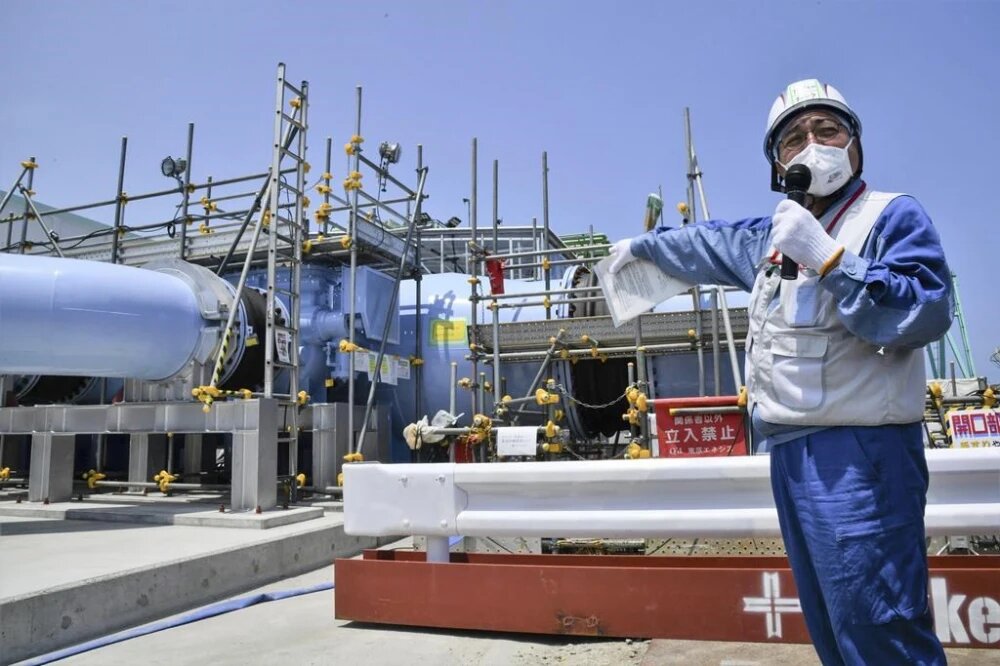Japan to Release Radioactive Water into Pacific

The UN nuclear watchdog has approved Japan’s plan to release treated radioactive water into the ocean. This long-awaited decision comes after years of development, as there is no other viable method to contain the contaminated material. Despite receiving UN approval, neighboring countries and local fishermen, who continue to experience the lingering effects of the 2011 Fukushima disaster, remain skeptical. In fact, some have raised doubts regarding the credibility of the International Atomic Energy Agency’s (IAEA) findings.
What are the reasons for doing this?
The earthquake and tsunami caused the reactor cores to overheat, contaminating the water with radioactive material. Ground and rainwater leaked in, creating more wastewater. TEPCO built 1,000 tanks to contain it, but space is running out. They need to free up space to decommission the plant, which involves decontaminating, dismantling, and shutting it down. They say they need to release the wastewater now to make progress.
What are the impacts?
Radioactive wastewater from Fukushima contains tritium, which can increase cancer risk if consumed. Experts believe that diluting wastewater will not reduce the impact on marine life.
Pollutants like tritium build up in the marine ecosystem, which is already stressed by climate change, ocean acidification, overfishing, and pollution. Wastewater could spread to other parts of the world. For example, a 2012 study found that bluefin tuna carried radionuclides from Fukushima to California.

What is the process for releasing the water?
First, the wastewater will be treated to remove all harmful elements that can be filtered out. The water will then be stored in tanks and analyzed to measure its radioactivity. Much of the water will be treated a second time.
The wastewater will then be diluted to 1,500 becquerels of tritium per liter, which is a unit of radioactivity. This is much lower than the regulatory limits in Japan (60,000 becquerels per liter), the World Health Organization (10,000 becquerels per liter), and the United States (740 becquerels per liter).
The diluted water will then be released through an undersea tunnel off the coast into the Pacific Ocean. Third parties, including the International Atomic Energy Agency (IAEA), will monitor the discharge during and after its release.
The IAEA’s Director General Rafael Mariano Grossi said in a report that this will ensure that relevant international safety standards are applied throughout the decades-long process laid out by the government of Japan and TEPCO.
How does the public react?
The public reaction to the plan to release wastewater from the Fukushima nuclear plant has been mixed. In South Korea, there has been much more skepticism. Some shoppers have stocked up on seafood and sea salt, concerned that the wastewater release could impact these products. This has led to a jump in sea salt prices, and the Korean fisheries authority has said that it will ramp up monitoring of salt farms for radioactivity.

In Japan, opinion is also mixed. A survey found that 51% of respondents support the wastewater release, while 41% oppose it. However, there have been protests against the plan in Tokyo and Fukushima, where the disaster occurred. Fukushima fishermen have been particularly vocal against the plan, fearing that it will further damage the region’s reputation and hurt their livelihoods. One fisherman said, “It feels like they made this decision without our consent.”

- Art
- Causes
- Best Offers
- Crafts
- Dance
- Drinks
- Film
- Fitness
- Food
- Giochi
- Festival
- Gardening
- Health
- Home
- Literature
- Music
- Networking
- Altre informazioni
- Party
- Religion
- Shopping
- Sports
- Theater
- Wellness



